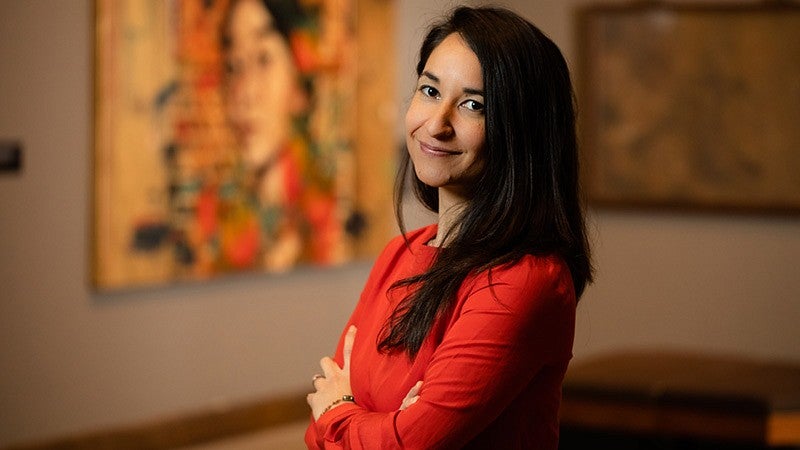
Basic Article Headline Sample: Keep Your Headlines Succinct
Assistant professor in the Department of the History of Art and Architecture examines Asian stereotypes
By Firstname Lastname • Photos by Firstname Lastname • Illustration by Firstname Lastname • Month 00, 2023
2 min read
Jenny Lin fell for Shanghai at 22, when she moved there after college. She remembers morning bike rides through the city, with the smell of fresh youtiao—Chinese donuts—rising from food stalls and the sight of older generations practicing tai chi and water calligraphy. “I love that city,” says Lin, an expert in contemporary Asian art and urban culture. Lin’s father comes from Wenzhou, down the coast from Shanghai, where many relatives still live. Lin grew up in the San Francisco Bay Area, where she often spoke Chinese with her father and grandparents. In Shanghai, when she wasn’t teaching English, Lin would join her colleague, a drummer in an all-women Chinese punk band, at underground shows. She also interned at the Space Art Gallery, which focused on public art and street photography. There, Lin first learned that China’s arts scene is booming. Under Chairman Mao, Lin says, “China had a very controlled artistic climate. In the aftermath, artists started developing really cool and experimental avant-garde projects and practices.” Yet there is a dearth of scholarship on the subject. Lin is changing that with her new book, Above Sea: Contemporary Art, Urban Culture, and the Fashioning of Global Shanghai.
Vampires and Soul-searching
In her free time, Lin writes fiction, a pastime she picked up in Shanghai. Her first novel follows a young architect in the city who’s bitten by a vampire; to heal herself, she makes secret “psycho-geographic” maps that chart Shanghai’s geography as well as the emotions she experiences. “It’s a surrealist exercise,” Lin says, laughing. “If she’s able to find the soul of the city, then she’s able to heal her own soul.”
Bite of Shanghai
Shanghai has a culinary culture like no other, from its street food scene—anything from steamed buns to skewered meats—to fine-dining staples such as sweet-and-sour “squirrel-shaped” Mandarin fish. Lin’s favorite is shengjian bao, “a delicious pan-fried pork bun,” she says; she also explores cuisine from China’s many provinces, such as Sichuan and Yunnan, as well as international cuisine from Nepal, Japan, and Italy. Lin’s favorite meal memory, however, is a raucous banquet with her grandfather’s six siblings and their large families, where the restaurant’s hosts zoomed around on roller skates. That was the moment she discovered her family’s fondness for dining and Chinese rice liquor, she says.
Explaining Orientalism
When Lin teaches Contemporary Asian Art and Architecture, she begins with Orientalism, investigating Asian stereotypes proliferated by Western culture—Gauguin’s paintings of Tahitian women and Mickey Rooney’s racist caricature in Breakfast at Tiffany’s, for example. Lin wants students to consider how, under the weight of colonialism, Asian cultures are often condensed into one, rather than understood as a collection of vast and varied peoples. “We explore recent works by Asian artists, filmmakers, and architects as complex cultural hybrids that demand to be considered in their local and global contexts,” Lin says.
Alex Cipolle, MA ’11 (journalism), is the College of Design staff writer.




